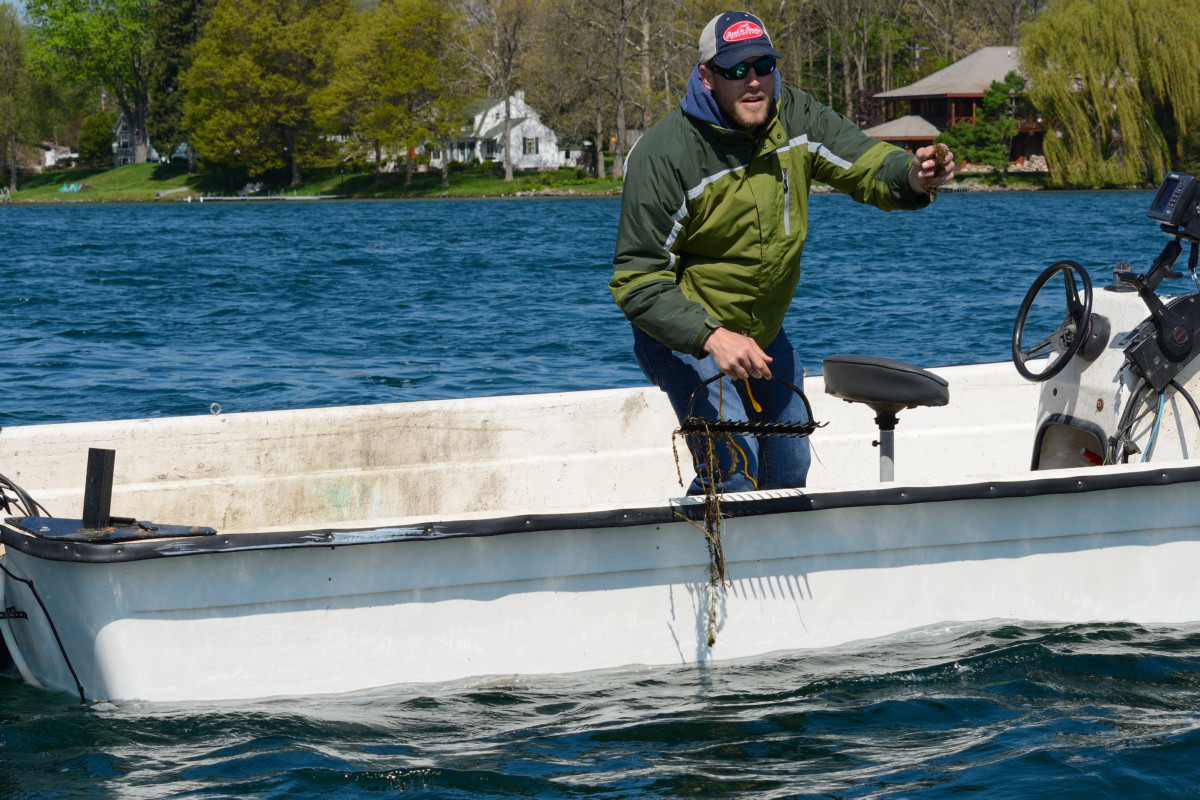Clark Lake has declared war on the advance of hybrid Eurasian water milfoil (HEWM). Why? Where left unchecked, HEWM can diminish recreational use of a lake, destroy wildlife habitat, and negatively affect property values. A majority of Clark Lake lakefront property owners petitioned Columbia Township to establish a special assessment district (SAD) to deal with the problem. The SAD allows treatment of HEWM wherever it exists in the lake and covers the cost of the project through the property taxes of lakefront landowners.
 PLM Lake & Land Management (PLM) has been contracted to treat Clark Lake. It also treats other lakes in our region, and they have found each lake to be individual. Take, for example, this chain reaction when Eurasian milfoil enters a lake. The invader mates with the native plant. The resulting hybrid mates with other hybrids and native plants. Or varieties of hybrids travel from lake to lake by boat or other means. Darwinian evolution results in improved sustainability and thus, a greater opportunity to procreate, and become immune to threats like treatment programs. Take that cycle through several iterations, and you can see the challenge in knocking off an invasive species.
PLM Lake & Land Management (PLM) has been contracted to treat Clark Lake. It also treats other lakes in our region, and they have found each lake to be individual. Take, for example, this chain reaction when Eurasian milfoil enters a lake. The invader mates with the native plant. The resulting hybrid mates with other hybrids and native plants. Or varieties of hybrids travel from lake to lake by boat or other means. Darwinian evolution results in improved sustainability and thus, a greater opportunity to procreate, and become immune to threats like treatment programs. Take that cycle through several iterations, and you can see the challenge in knocking off an invasive species.
During the 2016 season, PLM treated about 30 acres of HEWM with a product called Renovate (active ingredient, triclopyr). According to PLM’s Steve Hanson “initial results were good, but follow up surveys indicated regrowth of HEWM by summers end.” Steve noted “these results were concerning to me, as I expected our treatments to have at least season-long effects, if not multiple years.”
To focus treatment on Clark Lake’s version of HEWM, samples were sent to lab for testing. The Clark Lake plants were exposed to three herbicides—triclopyr, 2,4-D, and Fluridone. The lab reported the Clark Lake samples were not susceptible to 2,4-D. Some samples were somewhat vulnerable to triclopyr, while others were not affected. The labs results showed all Clark Lake HEWM samples were susceptible to Fluridone.
 Steven Hanson concludes “it is not prudent to continue the triclopyr treatment.” He states “the logical next step is to look at using Fluridone in Clark Lake.” But logistical issues prevent that from happening in 2017. The process requires assembling data and submission of the lake management plan to the DEQ. The other hurdle is higher cost. However, if most treatment was suspended in 2017, the “savings” might be applied to the more expensive, but more effective, program in 2018. Feedback from Columbia Township suggests that this could be done.
Steven Hanson concludes “it is not prudent to continue the triclopyr treatment.” He states “the logical next step is to look at using Fluridone in Clark Lake.” But logistical issues prevent that from happening in 2017. The process requires assembling data and submission of the lake management plan to the DEQ. The other hurdle is higher cost. However, if most treatment was suspended in 2017, the “savings” might be applied to the more expensive, but more effective, program in 2018. Feedback from Columbia Township suggests that this could be done.
What about Fluridone as a treatment product? At typical application rates (6 parts per billion), there are no swimming, fishing and only minor irrigation restrictions.
This testing program is under careful review by PLM and by the maker of the treatment product. The goal is to focus on the unique characteristics of Clark Lake.
As more information becomes available, expect to see more updates on this website.










